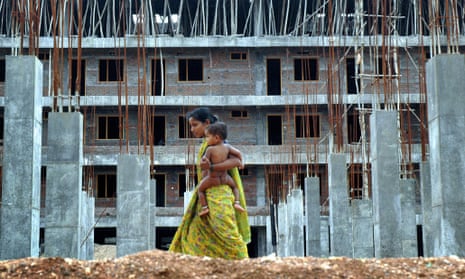Want to have a green building? Of course you do. Can you afford it? That’s the question.
From Mumbai to Manchester, it’s the same old stumbling block that stops green projects getting off the ground. Environment costs money, lots of it, upfront. Sure, you might recoup it in terms of energy savings eventually, but meanwhile, those capital costs are just too prohibitive.
At least this is the conventional wisdom. In India, where a construction boom is seeing towers explode out of the ground across the country, it’s a wisdom that is deeply unsustainable. Already highly dependent on coal and diesel, increasing quantities of which are imported, India faces a looming energy gap. More of the same simply won’t do.
But in a swathe of business parks across southern India, conventional wisdom is being turned on its head. Infosys, the Indian IT business that made millions from outsourcing, is pioneering a new approach. Its head of green innovation, Rohan Parikh, is a passionate advocate of energy efficiency – particularly for cooling, which accounts for the majority of Indian office consumption.
Convinced that savings could rapidly outweigh costs, he persuaded his finance department to back some bold new initiatives. The most celebrated example is at the company’s new Hyderabad campus. Faced with the need to accommodate its fast growing workforce, Infosys realised it had a chance to stage what Parikh calls “a massive, unprecedented experiment”. So it built a new block in the form of two separate wings – identical in every respect apart from their energy system. One was designed along conventional lines; the other incorporated the latest efficiency technologies, notably “radiant cooling”. This draws heat from the room to walls cooled by water circulating through embedded pipes.
As an idea, it’s as old as the hills – or rather, the caves with water running down the inside, which provided early humans with cool shelter. But introducing it into a 21st-century office – along with an array of other efficiency measures - had dramatic consequences. Parikh and his team expected to trim energy bills, and they weren’t disappointed: the green building recorded savings of around 38%, he says, compared to its conventional twin. More striking, though, was that it cost 1% less to build. At a stroke, this whips the rug from under the feet of those who claim that energy efficiency is a capital cost too far. “There’s no question of arguing over payback times”, says Parikh, “because the payback time here is zero. It’s cheaper all around. End of argument.”
It’s proved popular with the staff too: surveys show people find the greener building more comfortable to work in, and absenteeism rates are lower compared to its neighbour.
For Parikh, this proves his faith in what he calls “unreasonable goals”, aiming for the results you want, not those you think are practical with today’s techniques.
It’s one thing to build from scratch of course; another to retrofit existing stock. But here, too, Infosys has recorded dramatic savings, by “rightsizing” the plant to meet precise energy demands, introducing state-of-the-art cooling systems, uninterruptible power supplies, and solar-reflecting roofs. Since the programme started in 2007, it has cut electricity consumption per employee by 44% which, along with a growing use of renewables, has reduced greenhouse gas emissions per head by 61%. All retrofit investments must have a payback time of three years, which is music to the ears of any finance director – as is the fact that, over the last seven years, they say they have cut corporate energy bills by $80m (£48m).
The scale of its achievements won Infosys this year’s Gold Award in the international section of the Ashden Awards for Sustainable Energy, where it was applauded for showing that “cutting energy use makes sound commercial as well as environmental sense.”
So can Infosys infect the rest of India with its good example? On the surface, there’s a long way to go, with most Indian office stock an object lesson in wasting energy. But Parikh is optimistic. At the moment, he says, Indian businesses commissioning new buildings talk to architects “about looks, or comfort, or whatever – they never mention energy consumption. But that’s because they assume it will be a cost, not a saving … So we will be publishing the hard data, talking to the CFOs of our competitors, telling them what energy we’re consuming per square metre, and how much we’re saving compared to conventional methods.” Any company making a major decision has to have a business case, “and we’ve proven that we have a fantastic one. That’s why our CFO keeps funding us!”
Away from its green profile, Infosys has been through tough times of late. While still profitable, it’s been wrong footed by the rise of cloud computing and the power of Google. New CEO Vishal Sikka seems to have injected a note of confidence, with ambitious talk of seizing new opportunities in areas such as smart metering. If he can sync Infosys’s core business to its triumphs in energy efficient infrastructure, that really would be a sustainable success story.
Martin Wright is a journalist and editor based in Mumbai and London. He is founding editor of Green Futures and director of Forum for the Future (India)
- India’s second biggest IT company inspires Google eco-friendly building
- Designers have an obligation to make sure their work is truly sustainable
- A tiny, rare snail in Malaysia has big consequences for global cement giant
The technology and innovation hub is funded by BT. All content is editorially independent except for pieces labelled advertisement feature. Find out more here.
Join the community of sustainability professionals and experts. Become a GSB member to get more stories like this direct to your inbox.

Comments (…)
Sign in or create your Guardian account to join the discussion